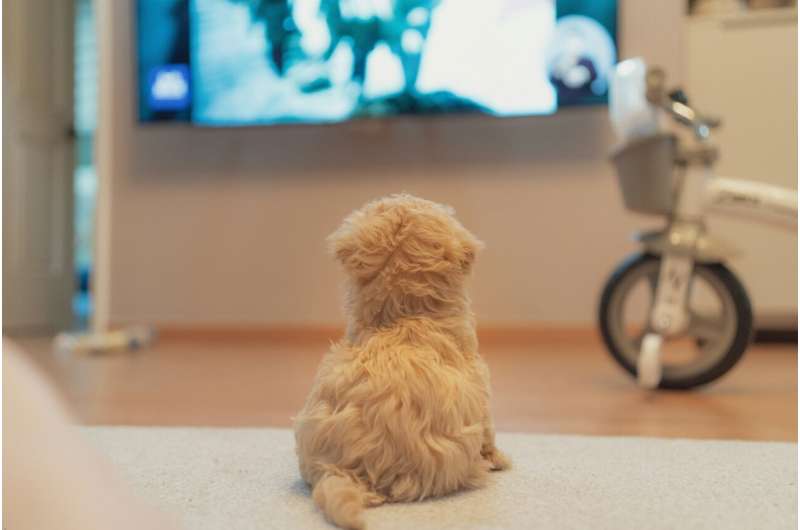Dogs' TV viewing habits vary by personality

Stephanie Baum
scientific editor

Andrew Zinin
lead editor

The way household dogs engage with TV may depend on their personalities, suggests research in Scientific Reports. Excitable dogs were more likely to follow on-screen objects while fearful or anxious dogs were more likely to respond to stimuli such as cars or a doorbell, with the dogs surveyed watching TV for an average of 14 minutes and eight seconds.
There has been an increase in dog-specific television programming in recent years, and the frequency with which dogs are exposed to different forms of media is increasing. However, to date there has been no systematic assessment of the way in which pet dogs engage with TV at the population level.
Researcher Lane Montgomery and colleagues anonymously recruited 650 dog owners and constructed a novel TV viewing scale to observe dog viewing habits based on responses from the owners. The age range of the final sample of 453 dogs was two months to 16 years old. In total, 300 dogs were from breeds recognized by the American Kennel Club (AKC), while 153 were mixed-breed dogs or breeds not formally represented by AKC groupings.
The survey investigated trends in the dogs' TV viewing habits, including whether the owner tried to teach the dog to watch TV, the average number of hours per week the owner's TV was switched on, and the average number of seconds the dog paid attention to the TV. Dogs were assessed for their reactions to animal stimuli, non-animal stimuli, and the extent to which they followed objects on the screen.
Overall, dogs were found to be more likely to react to seeing animals onscreen than to other stimuli, with approximately 45% of the dogs (206 in total) always responding to dog noises such as barking and howling. Dogs reported by their owners as being excitable were observed to more frequently follow objects on-screen as if they existed in real life. However, fearful or anxious dogs were more likely to respond to non-animal stimuli such as car horns or doorbells. These temperament differences could inform training approaches to rectify problem behaviors towards TVs.
The authors caution that as the survey respondents were pet owners whose dogs regularly interact with television stimuli, the findings may not be representative of all dogs. However, they conclude that engagement with television could provide dogs with an enriching and meaningful experience.
More information: Lane I. Montgomery, Characterizing TV viewing habits in companion dogs, Scientific Reports (2025). .
Journal information: Scientific Reports
Provided by Nature Publishing Group


















